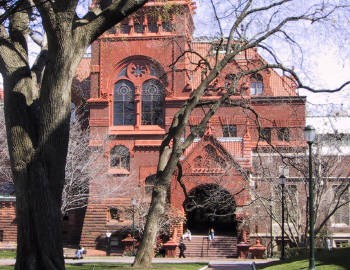Class of 2022 Admissions Results for Elite Public Universities
The competitiveness of admissions is perennially intense at top-tier public as well as private institutions. Admission rates, a measure of the exclusivity of institutions, has become a proxy for academic excellence as perceived by most high school students and their parents when they analyze and compare top-tier schools. In this respect, admission rates are as important to the reputation and ongoing success of an institution as any other factor.
In two recent posts, we provided a summary of the Class of 2022 admissions results at Ivy League and other private top-tier colleges and universities. In this post, we’ll review admissions results for the “Public Ivies”. We’ll use the original list for this group developed by Richard Moll, who coined this term in his 1985 book Public Ivies: A Guide to America’s Best Public Undergraduate Colleges and Universities. The terms refer to U.S. institutions that he asserted provide an Ivy League-level educational experience at public university prices.
Moll also developed a list of what he called “Public Ivies – Worthy Runner-Ups”, which included University of Colorado at Boulder, Georgia Institute of Technology, University of Illinois at Urbana-Champaign, New College of Florida, Pennsylvania State University, University of Pittsburgh, Binghampton University (SUNY), and the University of Washington at Seattle.
As was true of the private institutions reported on previously, application volumes surged for the Class of 2022at Public Ivy institutions and produced declines in the admission rates for many of them.
Table A is a comparison of the Class of 2022 to the Class of 2021 for application volumes, admitted students, and the percentage of applicants admitted. Data on admissions results is still not available for several of these institutions. Following Table Aare admissions highlights for selected schools.
Table A: Admissions Results for 2018 and 2017
for the Public Ivies
| Institution | Apply 2018 | Admit 2018 | Admit % 2018 | Apply 2017 | Admit 2017 | Admit % 2017 |
| College of William & Mary | 14,640 | 5,270 | 36 | 14,921 | 5,372 | 36 |
| University of Miami (Ohio) | ||||||
| University of Michigan | 66,684 | 15,400 | 23 | 58,590 | 14,000 | 23 |
| Univ. of North Carolina | 43,384 | |||||
| University of Vermont | ||||||
| University of Texas | ||||||
| University of Virginia | 37,222 | 9,850 | 26 | 36,807 | 9,957 | 26 |
| University of California (Entire System) |
||||||
| Berkeley | 89,294 | 13,582 | 15 | 85,054 | 15,567 | 18 |
| Davis | 77,727 | 32,179 | 41 | 70,968 | 30,945 | 44 |
| Irvine | 94,866 | 27,334 | 29 | 85,097 | 31,103 | 37 |
| Los Angeles | 113,409 | 16,020 | 14 | 102,232 | 16,984 | 16 |
| Merced | 23,778 | 16,821 | 71 | 22,583 | 16,315 | 72 |
| Riverside | 48,755 | 24,993 | 51 | 43,675 | 25,062 | 57 |
| San Diego | 97,670 | 29,577 | 30 | 88,463 | 30,204 | 34 |
| Santa Barbara | 92,017 | 29,782 | 32 | 81,828 | 26,879 | 33 |
| Santa Clara | 56,106 | 26,997 | 48 | 52,974 | 27,216 | 51 |
The University of California
There has been a mix of admissions results among the University of California branches. System-wide, the overall freshman admission rate decreased from 62% to 60% as the growth in applications outpaced the growth in admittances. The average admission rate for California residents decreased from 63% to 59% year over year, while out of state and international admit rates remained the same at 54% and 67%. UCLA remained the most selective campus, just ahead of Berkeley, while Irvine jumped to #3, San Diego stayed at #4 and Santa Barbara fell to #5. Davis, Santa Cruz, Riverside and Merced remained unchanged at spots 6 through 9.
The admissions results for the UC campuses are summarized below:
- Berkeley: The overall admission rate fell from 18% to 15% in 2018 on the strength of 5% application growth and a 13% decline in the total number of admitted students. The mix of in-state admits grew from 62% to 66% at the expense of out-of-state admits.
- Davis: The overall admission rate fell from 44% to 41% for 2018 as application growth outpaced admitted student growth (10% vs. 4%). Out-of- state and international applicants were admitted at rates will exceeding California residents (70% and 56% vs. 34%). Davis was one of three campuses to report growth over 2017 in the number of admitted students.
- Irvine: The overall admission rate declined precipitously from 37% to 29% on a 12% surge in applications and 12% decline in admits. Admission rates declined for both residents and non-residents. Out-of-state and international admission rates at Irvine remain higher than the resident admission rate (43% and 39% vs. 25%).
- Los Angeles: The overall admission rate declined from 16% to 14% on 11% application growth and a 3% decline in admitted students. The resident admit rate declined from 15% to 12% while non-resident admit rates remained about the same.
- Merced: The overall admission rate declined from 75% to 71% as admitted student growth outpaced applicant growth for the year (9% vs. 3%). All 500 additional admitted students in 2018 were California residents. The mix of out-of-state and international admits fell from 6% to 4% of total. Merced was one of the three campuses to increase the total number of admitted students over 2017.
- Riverside: The overall admission rate declined from 58% to 51% on an 12% surge in admitted students. Both residents and non-residents experienced declines in admit rates. The mix of California resident admits remained high at 89% of total.
- San Diego: The overall admissions rate declined from 34% to 30% as the result of 10% application growth and a 2% decline in admitted students. The California resident admit rate declined from 31% to 27%, while the admit rate for out-of-state applicants held steady at 51% and the admit rate for international students declined from 33% to 29%. Together, out-of-state and international students constituted 40% of the total admitted mix.
- Santa Barbara: The overall admission rate declined slightly from 33% to 32% as application growth slightly outpaced admit growth (13% vs. 11%). The admission rate for California residents declined from 32% to 30%, while the admit rates for out-of-state applicants increased from 44% to 48% and from 31% to 34% for international applicants. Overall, out-of-state and international students grew to 33% of the total mix of admitted students, up from 31% in 2017. Santa Barbara was one of three campuses to increase overall admittances year over year, and the only one to increase admittances across the board for in state, out of state, and international applicants.
- Santa Cruz. The overall admissions rate declined from 55% to 48% in 2018 on the strength of 14% applicant growth. The number of admitted residents declined 14%, while out-of-state admits declined 4% and international admits grew 8%. The mix of out of state and international students grew from 29% of total admits in 2017 to 31% of total admits in 2018. Admissions rates for out-of-state and international applicants are significantly higher at this campus than the resident admit rate (83% and 78% vs. 41%).
The University of Virginia
The University of Virginia admitted 9,850 students for its Class of 2022. These were drawn from an applicant pool of 37,222 students. Last year’s applicant pool for the UVA Class of 2021 was 36,799 students. Thisyear’s applicant pool was the largest in the universities’ long history, representing all 50 states and 147 nations countries.
10% of admitted applicants are first-generation college students and 35% come from minority backgrounds.
The College of William & Mary
14,640 students applied to the College’s Class of 2022 and 36% were admitted.
The admitted students have a median SAT score of 1460 and a median ACT composite score of 33. 87% are ranked in the top 10 percent of their classes. Admits representall 50 U.S. states and 48 countries. International students make up 7%of admitted students and students of color comprise 35% of admitted students.
IvySelect is a college admissions consulting firm that specializes in top-tier institutions. We provide superior comprehensive and individualized counseling based on years of experience in guiding students to success in meeting their educational goals. In addition to Ivy League and many other top-tier private institutions, we have assisted students in gaining admission to Public Ivies and other flagship public universities including Berkeley, UCLA, Virginia, North Carolina, Texas, Wisconsin, Michigan, and others.





